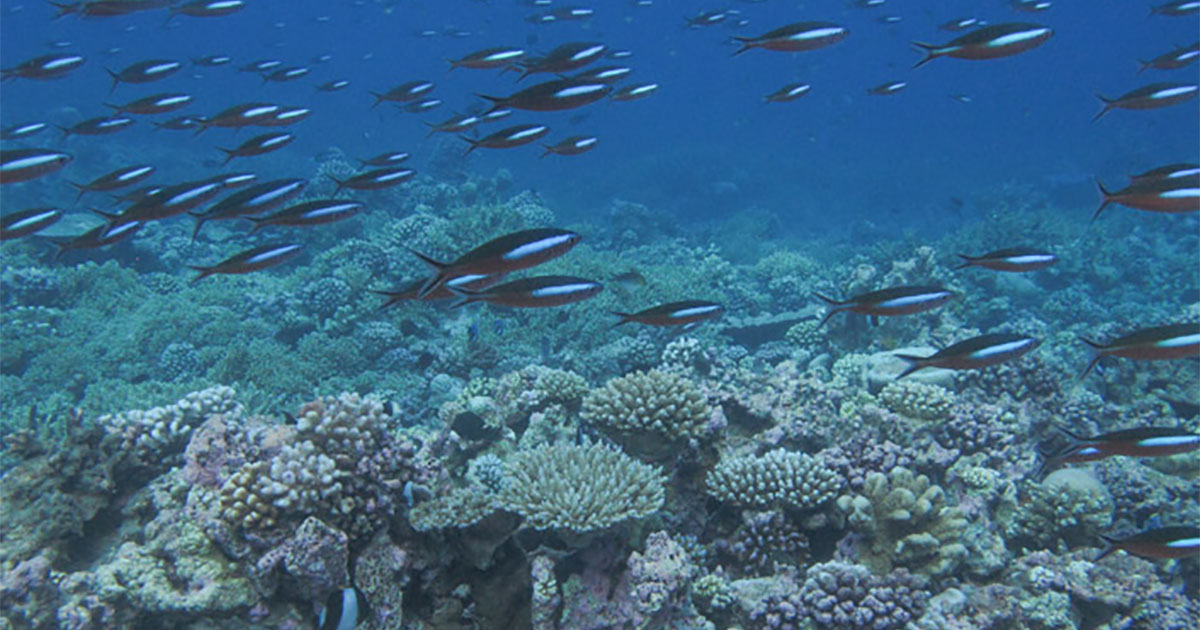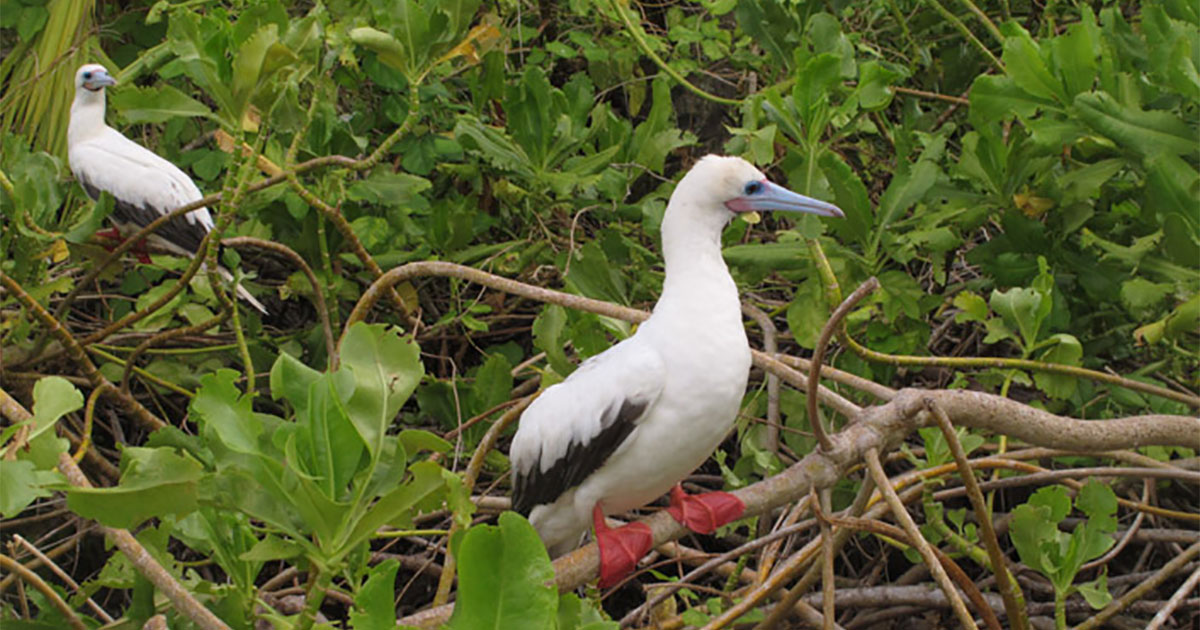Nutrients in seabird droppings are boosting coral growth rates in a remote reef system and helping them bounce back quicker from disturbances like bleaching, a new study has found.
The paper, co-authored by a scientist from the Australian Institute of Marine Science (AIMS) and published in the journal Science Advances, details how seabirds contribute to the growth of corals via their droppings, or guano, which contains nitrogen and phosphorus-rich nutrients.
The seabirds feed on fish in the open ocean, then return to roost on the tropical islands, depositing guano in the coastal soil. Some of these nutrients leech into the surrounding seas where they fertilize coral and even boost growth rates of fish.
The Lancaster University-led study of the remote Indian Ocean archipelago also found the presence of seabirds like red footed boobies, sooty terns and lesser noddies could double the growth rates of table and branching corals (Acropora) compared to reefs next to rat-infested islands without seabirds.
Acropora coral around islands with seabirds recovered from bleaching events by around 10 months faster (approximately three years eight months) compared to reefs located away from seabird colonies (four years six months).

Reefscape from the Indian Ocean Archipelago. (Image credit: Shaun Wilson)
Lead author on the study Dr. Casey Benkwitt, research fellow in coral reef ecology at Lancaster University, said the faster recovery times may be critical under climate change, where bleaching events occur more frequently now than in earlier decades.
“The average time between successive bleaching events was 5.9 years in 2016—a reduction from 27 years in the 1980s. Even small reductions in coral recovery times may be key to maintaining coral cover over the short-term,” said Dr. Benkwitt.
“We’ve been able to show a clear link between the presence of seabirds and faster coral growth. This is really exciting and encouraging that a natural solution is available to help boost the resilience of coral reefs in the face of a warming planet.”
Co-author Dr. Shaun Wilson from AIMS and The University of Western Australia (UWA) said the environmental benefits of seabird nutrients go beyond increased rates of coral recovery.
“Growth rates of fish on reefs adjacent to islands with large seabird colonies is also faster and overall biomass of fish is 50% greater than on reefs next to islands with rats.
“Consequently, rates of grazing and bioerosion by fishes is three times faster on islands with seabirds. These are key processes helping to maintain a healthy reef.”
The study findings add further weight to the growing body of evidence that shows the ecological damage across ecosystems on land and sea from invasive rats on tropical islands.
“At AIMS we intend to build on this research by identifying reef systems that are most likely to benefit from eradiation of pests on the land. We will also investigate the source of nutrients, something that may be crucial on islands where nutrients may also come from human waste,” Dr Wilson added.
The study was supported by the Bertarelli Foundation as part of the Bertarelli Program in Marine Science.
The authors of the paper are from Lancaster University, Heriot-Watt University, University of Tubingen, the University of Southampton, AIMS and UWA.



